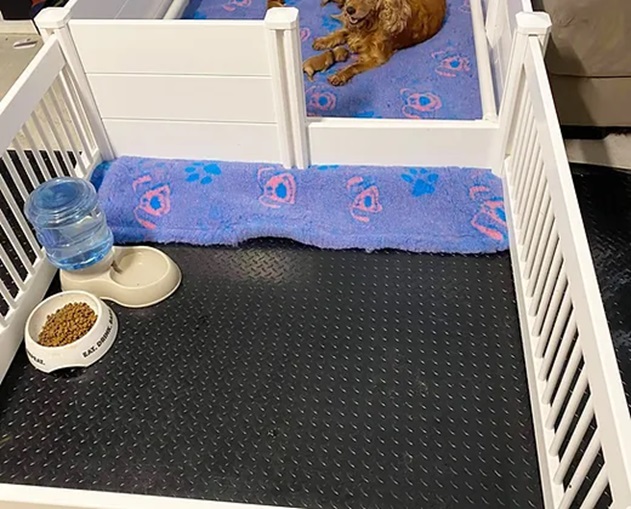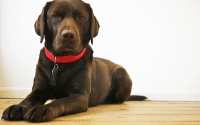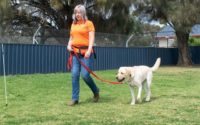Dog Breeding Made Easy: Essential Supplies for Canine Reproduction
Breeding dogs involves far more than simply pairing two animals together. It’s a complex process that requires careful planning, knowledge, and dedication to ensure the health and well-being of both the mother and her puppies.
One of the most crucial aspects of successful breeding is the use of the right equipment. The first step is to choose a whelping box, which is essential for creating a safe and comfortable environment during pregnancy, delivery, and the early stages of the puppies’ lives. Attention to these details not only supports the mother’s health but also sets the foundation for healthy, thriving puppies.
Essential Equipment for Dog Breeding

Buy a Whelping Box for the Safety of the Mother and Her Puppies
First, what is the purpose of a whelping box? A whelping also known as a nesting box or birthing box, serves a critical purpose in the breeding process. It provides a safe, controlled environment where the mother, or dam, can give birth to and care for her puppies. The primary purposes of a whelping box include safety for the puppies, comfort for the mother, temperature control, protection from crushing, hygiene and cleanliness.
Dog whelping boxes serve as a secure and designated space that helps prevent the puppies from wandering off and getting into potentially dangerous situations. The high sides of the box keep the puppies contained, while still allowing the mother to move in and out with ease. This containment is crucial in the early stages of the puppies’ lives when they are most vulnerable and unable to protect themselves.
The design of a whelping box also includes features that protect the puppies from accidental crushing. Many whelping boxes are equipped with pig rails or rails along the sides. These rails create a small gap between the walls and the floor of the box, providing a safe space for the puppies if the mother rolls over or lies down too close to the edge. This simple yet effective feature can be life-saving for newborns.
Temperature control is another critical aspect of a whelping box. Newborns can’t maintain their body temperature very well, so it’s important to keep them warm. A good whelping box can be equipped with a heating pad or lamp to ensure the puppies remain cosy and safe, especially during colder months.
Hygiene is also easier to manage with a nesting box. The confined space allows for better control over cleanliness, reducing the risk of infections and illnesses. Many whelping boxes are designed with easy-to-clean materials and may include removable liners that can be washed or replaced, ensuring a sanitary environment for both the mother and her pups.
Investing in a quality birthing box is an investment in the health and well-being of both the mother and her puppies. It provides a safe, comfortable, and clean environment, ensuring that the birthing process and early days of life go as smoothly as possible. For any responsible breeder, a whelping box is not just a convenience, it’s rather a necessity.
Heating Lamp
A heating lamp is an essential component of whelping boxes, playing a crucial role in ensuring the warmth and comfort of newborn puppies. Puppies are unable to regulate their body temperature effectively in their first few weeks of life, making it vital to maintain a consistently warm environment.
A lamp provides a reliable source of heat, mimicking the warmth that the mother dog would naturally offer. The gentle, radiant heat from the lamp helps keep the puppies cosy and safe, reducing the risk of hypothermia, which can be a serious threat to their health.
Positioning the heating lamp at a safe distance from the puppies ensures they stay warm without overheating, creating a nurturing environment where they can grow and thrive.
Crush Rail
A crush rail, also known as a pig rail, is a crucial safety feature in whelping boxes designed to protect newborn puppies from accidental crushing. You can install the rail on the inner sides of the whelping box, resulting in a slight space between the wall and floor.
This gap provides a safe space for puppies to move into if the mother dog lies down too close to the edge of the box. Newborn puppies are small and fragile, and without this protection, they could easily be accidentally injured or suffocated by the mother.
The crush rail gives the puppies a refuge, ensuring that they are not pinned against the sides of the box. This simple yet effective feature is a key element in safeguarding the health and well-being of the puppies during their most vulnerable early days.
Additional Tips for Succesful Dog Breeding

Prepare Early
Choose the breeding pair carefully, considering genetic compatibility, temperament, and breed standards to minimize the risk of passing on hereditary conditions. Additionally, gather all the necessary equipment, such as a whelping box, heating lamp, and cleaning supplies, ahead of time.
Early preparation allows you to address any potential issues before they arise, creating a smooth and stress-free breeding experience for both you and your dogs.
Monitor Temperature
It’s essential to keep the whelping area warm, ideally between 85-90°F (29-32°C) for the first few days after birth. A heating lamp or pad can help maintain this warmth, but be sure to monitor it closely to avoid overheating. As the puppies grow, you can gradually reduce the temperature.
Keep It Clean
A clean whelping environment reduces the risk of infections and other health issues for both the mother and her puppies. Regularly change bedding, dispose of waste, and sanitize the whelping box to keep the area fresh and free from harmful bacteria. Ensure the safety of both the puppies and the mother by opting for non-toxic cleaning products.
Stay Informed
Stay informed about best practices, new research, and breed-specific information by reading books, attending workshops, and consulting with experienced breeders or veterinarians. Being knowledgeable about potential complications, such as dystocia (difficult labour) or congenital issues, allows you to act quickly and effectively if problems arise.



